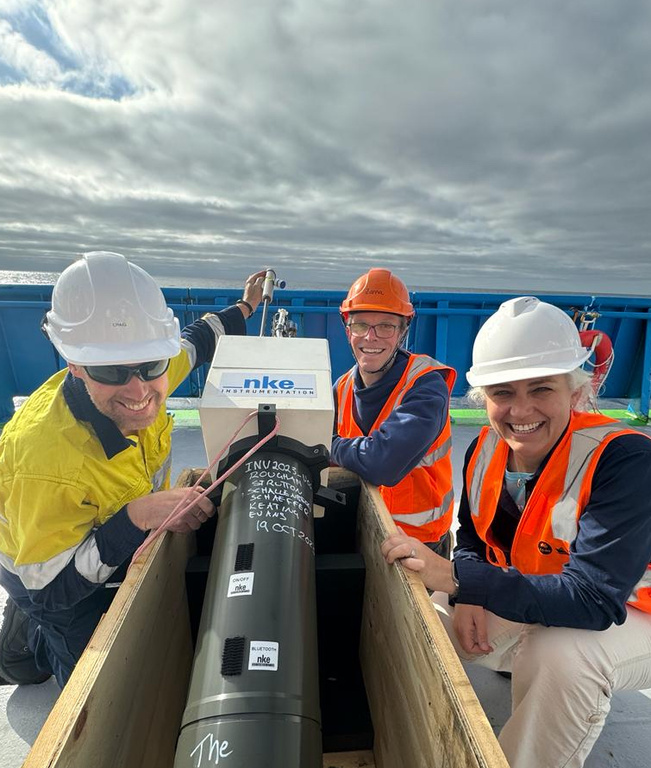Scientists aboard the current CSIRO research vessel (RV) Investigator voyage are taking a close look at the structure of East Australian Current (EAC) eddies.
The RV Investigator voyage IN2023_V06 are taking a close look at the structure of East Australian Current (EAC) eddies, and the fronts that lie between them to increase our understanding of their impact on the ocean, atmosphere and marine life in the East Australian Current (EAC) system.
These coherent oceanic features – akin to high- and low-pressure systems in the atmosphere – create a mosaic of currents and fronts in the Tasman Sea that affects life in the ocean at every level. The science team onboard the voyage have expertise that spans physical, chemical and biological oceanography, marine ecology, atmospheric science, and seagoing instrumentation.
Having so far sampled two distinct eddies and crossed multiple fronts, the team is aiming to identify how eddies are structured, how they interact with each other and the shelf, and what happens in the frontal systems between them. So far, they have done this by using RV Investigator’s Triaxus towed system and lines of CTDs (conductivity, temperature and depth instrument) to produce sections of ocean physics, chemistry and biology.
They have also deployed a suite of autonomous platforms including drifters, radiosondes and Argo floats, which will continue to provide data long after the scientists have returned to land.
Last Thursday, October 19th, the team deployed an IMOS biogeochemical (BGC) Argo float in the centre of a cyclonic (clockwise-rotating) cold core eddy. This float, an NKE CTS4 Jumbo with extra battery power, will profile twice daily initially, then revert to the standard Argo 2000m/10 day mission. In addition to temperature and salinity, the float is measuring dissolved nitrate, dissolved oxygen, phytoplankton chlorophyll and carbon, and the ocean light field.
These measurements will help disentangle the influence of light and nutrient supply on phytoplankton growth in this cold-core eddy. Now that the RV Investigator has left the eddy, the BGC-Argo data stream will provide a continuous record of the eddy’s behaviour to be combined with satellite observations in coming weeks and months.
The voyage is a large interdisciplinary effort supported by several IMOS data streams: Core Argo floats funded by the Bureau of Meteorology in other eddies, nearshore data from the Ocean Glider and Ocean Radar facilities, and comprehensive real-time data, essential for planning, from IMOS OceanCurrent.
Acknowledgements: The team on board acknowledges support from the University of NSW, University of Tasmania, Bureau of Meteorology, CSIRO, University of Auckland, University of the Sunshine Coast, University of Melbourne, and University of Technology Sydney. This research is supported by a grant of sea time on RV Investigator from the CSIRO Marine National Facility, the Australian Research Council through an ARC Discovery grant #DP 230100505 and support from NOAA and BoM for floats and drifters. The BGC-Argo float was funded by IMOS through the BGC-Argo sub-facility.
Written by Pete Strutton and the science team on board RV Investigator voyage IN2023_V06
